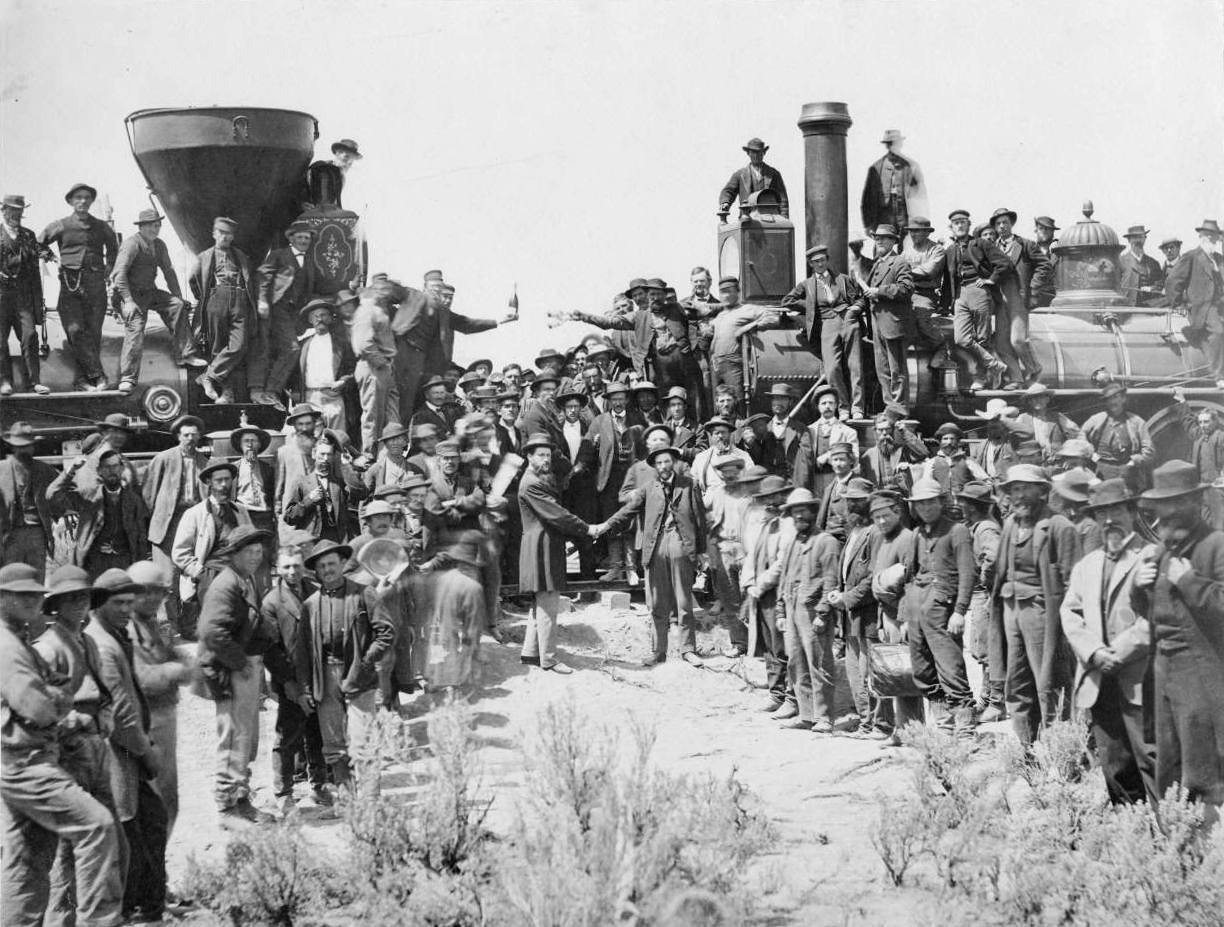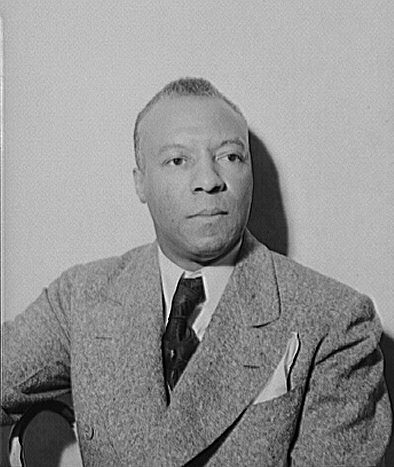
“Golden Spike Ceremony: Promontory Summit, Utah, 1869” marked the completion of the Transcontinental Railroad. Soon, the new railroad industry would be linked to Labor Day. Image: National Archives and Records Administration (NAI #594940. Public Domain. Included with appreciation.
When the Transcontinental Railroad, with more than 1,800 (2,900 kilometers) miles of track, opened in 1869 with the driving of the Golden Spike in Utah, thousands of workers had toiled to complete what had been the largest government project in history, to date. A cross-country trip that had previously taken months of overland perilous journey across deserts and mountains, or a sea-voyage around South America, was now possible. But working conditions were arduous and dangerous. Rail travel proved more comfortable: George M. Pullman began converting passenger cars into sleepers, employing “Pullman porters” to work aboard. Hiring practice discriminated racially, and enforced extremely long working hours – 400 per month.

“Pullman strikers and Illinois National Guard at Arcade Building,” 1894. Abraham Lincoln Historical Digitization Project. Image: wikimedia, public domain, Included with appreciation to all workers on Labor Day.
When Pullman laid off 30% of the workers in the recession of 1893, Pullman porters and employees walked out on strike. Train travel stalled in 27 states from Illinois, home to the Pullman company, and the West Coast. In the Chicago suburb of Blue Island, a crowd derailed a locomotive pulling a postal train, and the U. S. Attorney General enacted an injunction against the striking workers. President Grover Cleveland sent troops. Riots broke out, hundreds of rail cars were ravaged and burned by protestors; the National Guard fired into the mob, killing 30 people and wounding many others. This was in July 1894. Ironically, Cleveland had just signed, in June, a bill declaring a new holiday to honor workers and promote good conditions. The first Labor Day was celebrated on the first Monday in September of that year.

“A. Phillip Randolph – political and social leader.” Founder of the Brotherhood of Sleeping Car Porters. Image: wikimedia, public domain. Included with appreciation to A. Phillip Randolph and those in the BSCP union.
The Labor Day announcement raised national attention regarding Pullman workers. The Guard was recalled and the strike was over by August. While Labor Day began a new era of awareness of worker health and safety. Pullman porters now worked in better conditions: some earned more money, others advanced to management positions. But hours remained long. In 1925, Pullman porters, organized by A. Phillip Randolph, formed a union: Brotherhood of Sleeping Car Porters (BSCP). It took more than ten years to negotiate better working hours – 240 per month.
Transport has always initiated economic and social change. Ships, rails, wheels, and wings caused major shifts in commerce, communication, and culture. Labor Day honors all workers. Around the world, there are Labor day celebrations, some in May. But in the United States, the holiday is always observed in September, and we have transport to thank for its origin and celebration.

“Labor Day” by S.D. Ehrhart, 1909. Image: Library of Congress #2011647501. Public Domain. Included with great appreciation to all who labor.
Building the World Blog by Kathleen Lusk Brooke and Zoe G. Quinn is licensed under a Creative Commons Attribution-NonCommercial-NoDerivs 3.0 Un
Davidson, Frank P. and K. Lusk Brooke. “The Transcontinental Railroad,” Chapter 17, Building the World. Pages 205 – 238. Westport: Greenwood Press, 2006. ISBN: 0313333734.
Loomis, Erik, A History of America in Ten Strikes. The New Press, 2018. ISBN-10: 1620971615.
United States Department of Labor. “History of Labor Day.” https://www.dol.gov/general/laborday/history
Whitney, Asa. A Project for a Railroad to the Pacific. New York: George Ward, 1849. Text available in Building the World, pages 215-227.

